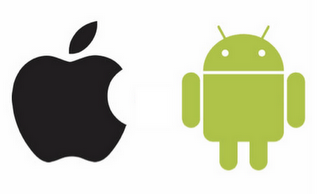Apple is selling north of 10M iPads every quarter. Compare that to leading Android tablet manufacturers:
- Motorola Xoom, the first real Android tablet, sold 250,000 in the first quarter of its release in 2011. No updated numbers are readily available since then, but given the lack anything resembling marketing coming from Motorola around the Xoom since then, along with increased competition from other manufacturers, I would guess that last quarter saw no more than 250,000 units sold in the past quarter as well.
- Samsung Galaxy Tab 10.1 sales numbers are not broken out. However, a Lenovo executive claimed that the device’s smaller cousin, the 7″ model, has sold no more than 20,000 units at retail.
- ASUS Transformer Prime, the best Android tablet that I have used, revealed in a court case that they had sold 80,000 units in the first few months (~2,000/month).
In short, sales of Android tablets are measured in tens to hundreds of thousands, where sales of iPads are measured in tens of millions.
We experience the enterprise divide every day at Mediafly. Many of our enterprise customers want to support Android tablets, but when pen comes to paper, the iPad is all that managers care about. This divide is further driven home by recent research from Good Technology, makers of enterprise email solutions. They find that 97.3% of enterprise activations for tablets in first quarter 2012 are iPad versions. The remaining 2.7% are for Android tablets.
The way this market is shaping out is quite depressing for an Android supporter like me. (As you may know, I’ve been recognized for my work building Android apps, and have built the popular Chicago Transit Tracker in the Android Market.). And there seems little that will change this in the near future. Below are my reasons for why Android tablets won’t come to dominate enterprise tablet usage over the next few years.
- No price advantage. While Android smartphones have a major price advantage to the iPhone ($99 for an unlocked entry-level Android smartphone, vs. $549 for the iPhone), the same price disparity can’t be found with tablets. The Galaxy Tab 2 10.1, Xoom, and iPad 2 all hover around $399, while the Transformer Prime prices at around $499.
- Phones are a necessity, tablets are not. If you are going to spring for a tablet, or if your company will buy a set of tablets for you and your coworkers, you/they will usually buy the market leaders, the safe option. This means the iPad.
- The iPad (3) is, frankly, better. I’ve used the Kindle Fire, NOOK Color, Samsung Galaxy Tab 7″, Motorola Xoom, Sony Tablet S, and ASUS Transformer Prime. Of all of these, the only tablet that comes close to the usability and smoothness of the iPad is the ASUS Transformer Prime. And that device falls short as well: the keyboard is awful, the display is not a retina display, and there is no cellular capability. And let’s not forget that ASUS’s marketing is hopelessly outmatched by Apple’s marketing.
You will notice that I don’t mention apps. Are apps important? For the consumer, absolutely. For the enterprise, less so. That will be a topic of another blog post.
Comments welcome.


You mention the Kindle Fire in passing, but it strikes me that this, or a Google tablet, is the first hope. The kindle fire sold some 5M in 6 weeks after launch and its non advertising subsidized model is $199, so there’s a pretty huge price difference. I’ve been fairly surprised that there hasn’t been more of a price difference, but I’m confident that’s coming for two reasons: First, Amazon is willing to subsidize or at least work on low margins because of the advertising and content connection. Second, because commoditization brings big cost reductions at multiple layers in the supply chain. I’m getting frequent notes from alibaba suppliers of $200 10″ capacitive displays with newer processors. I imagine they are still relatively crappy, but with ICS, they will get “adequate” pretty soon. Once those device “tip” at retail, you’ll see huge price drops because once there’s volume, you’ll see white label, private label folks happy to jump on the band wagon for low margins.
As far as being better, sure, Apple is a luxury product maker. I bought a vizio $169 8″tablet for experimenting with, and its pretty crappy in a number of ways. Yet my daughter happily uses it to play angry birds and watch youtube and calls it an iPad. I don’t think it will take as long as you think, but as someone once said, the electronics space does not move quickly, it moves slowly, but with regular step changes. I can’t say just when a tablet step change is coming, but I think there’s a reasonable chance that ICS is that point.
I agree with all of your points if we focus at the consumer level. At the enterprise level, however, I don’t think the world will work out this way. I don’t think the Kindle Fire will ever be a serious contender in Enterprise, nor will the crappy capacitive-display Android tablets. We don’t see salespeople/execs bringing personal ones for work purposes, which was a huge driver of iPad adoption in the enterprise. Furthermore, Enterprise IT is notoriously conservative. No one was ever fired for buying from IBM or Accenture. No one will have been fired for buying from Apple. Someone will be fired for buying a crappy capacitive-display Android tablet from a tiny Chinese manufacturer.